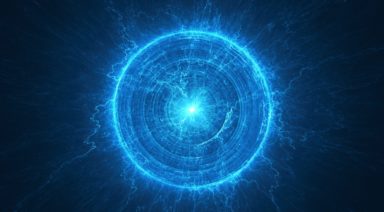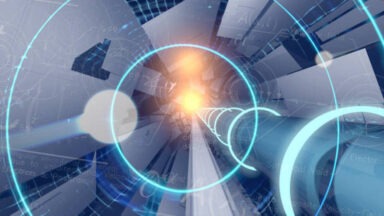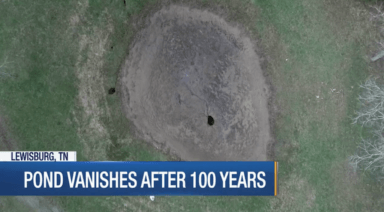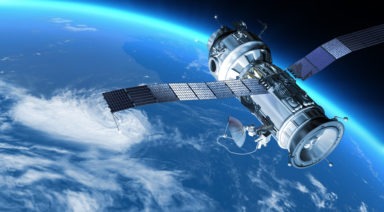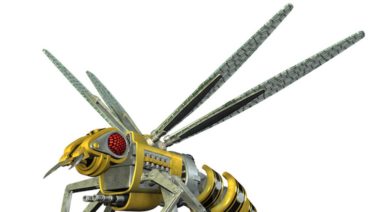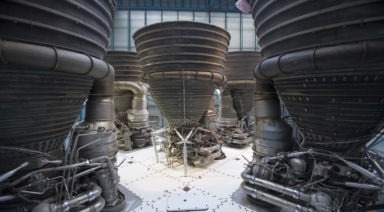What You Need To Know About Earth’s Magnetic Pole Reversal

Recently, there has been talk of a magnetic pole reversal that could have serious consequences for life on Earth. While some warn that a pole shift could be devastating, others say those fears are overstated and melodramatic. Is the situation really as dire as they make it sound?
When is the Pole Shift Supposed to Happen?
No one knows when the pole shift will transpire, but we know complete magnetic reversals have happened every 200,000 to 300,000 years over the past 20 million years. But that regularity hasn’t continued, as the last known reversal occurred roughly 780,000 years ago. There was an attempted pole shift about 40,000 years ago, though it was unsuccessful.
Throughout Earth’s history the poles have reversed hundreds of times and according to some, this gives us reprieve as there’s no evidence a magnetic pole reversal led to any noticeable devastation or mass extinction on the planet. But as far as we know, there weren’t complex networks of satellites and electronics during those ancient pole flips.
It’s debatable whether the pole shift will happen suddenly enough to cause dramatic effects, or whether it will be so drawn out as to be unnoticeable. Some think it will happen in such a way that it will leave us susceptible to cosmic radiation, causing mutations like cancer. Others believe it will take 1,000 years for the poles to reverse, making it largely unnoticeable.
If it’s true a reversal will take that long, scientists believe we will see more complexity in Earth’s magnetic fields and we may even see more than two poles simultaneously. But eventually, the poles will realign and flip into place opposite of where they currently are, leading only to confusion when trying to distinguish what used to be north from south on our now obsolete compasses.
One sign currently being observed is that the magnetic shield surrounding Earth is weakening at a faster rate than originally assumed. Over the past few centuries, the magnetic field weakened at a rate of 5 percent, but over the past few decades it has weakened at 10 percent. This is some of the strongest evidence a flip is about to occur.
Effects of a Magnetic Pole Shift
In a worst-case scenario, the pole reversal will weaken the magnetosphere to a point that will leave us vulnerable to cosmic radiation. We’re constantly bombarded with ultraviolet, electromagnetic radiation from the sun, but the Earth’s magnetosphere provides a shield to deflect those harmful rays.
In the event of a quick pole shift, it’s possible that shield could be in a state of flux and momentarily unable to protect us from large solar storms. This scenario would be particularly frightening if it damaged power grids, many of which are in some way connected, causing massive power losses and leaving us in the dark. It’s believed this would cost billions of dollars in damage.
This doomsday fear seems to be a bit sensationalist, though. As it turns out, there’s not necessarily any evidence the magnetosphere would shut down like the force field of the Death Star.
While it’s evident the field is weakening, some think it would only lead to slightly increased amounts of radiation in the atmosphere, more likely to affect satellites and objects at higher elevations. If anything, it would allow people at lower latitudes to witness the beautiful auroras currently seen in areas closer to the poles.

Another legitimate concern is that a pole flip could harm animals who rely on the Earth’s magnetic field for migration. An event like this might temporarily confuse animals already endangered from anthropogenic factors; we’ve disrupted habitats and migratory paths for a number of species already that adding confusion to their natural instincts could be devastating. As it is now, a third of all animals on the planet are endangered from human activity.
Another factor that could play a role in pole reversal is water displacement from climate change. The transfer of water in large quantities can have an impact on the magnetic fields of the planet. From polar ice caps melting, to more water evaporating into the atmosphere, the planet can shift on its axis in response to these transfers, subsequently affecting Earth’s magnetism.
Modelling a Magnetic Pole Flip
A geophysicist at the University of Maryland, Daniel Lathrop, has been working on creating a model of the Earth’s magnetic field with a massive, liquid sodium filled sphere. Lathrop’s experiment is meant to recreate the dynamo theory that is thought to be responsible for the generation of the planet’s magnetic field.
Dynamo theory is a process in which a rotating, convecting, and electrically conducting fluid maintains a magnetic field over astronomical time scales. In the case of the Earth, the planet consists of a liquid iron core within a layer of molten metal rotating at 1000 miles per hour. Changes in the core’s temperature and the planet’s rotation, boil and churn this metal to create the planet’s magnetic fields.
Lathrop created two massive spheres, one within another, recreating the effect in order to predict pole shifts and other geomagnetic phenomena. The inner sphere is 10 feet in diameter, spinning within 13.5 tons of liquid sodium at a rate of 960 rpm, while the outer sphere spins at 240 rpm, or 88 mph.
So far, he hasn’t achieved a dynamo, but has gathered a lot of important information about the fluid dynamics of the Earth’s core. At this scale, for every second Lathrop’s model spins, it simulates about 5,000 years of Earth’s rotation.
Hopefully, the experiment works and he’ll be able to achieve a dynamo effect, providing us with more insight on magnetic pole reversals. But for now, based on fossil records and the scientific data we have, it seems we should be safe from any major catastrophes when the flip finally happens.
Achieving Unlimited Free Energy
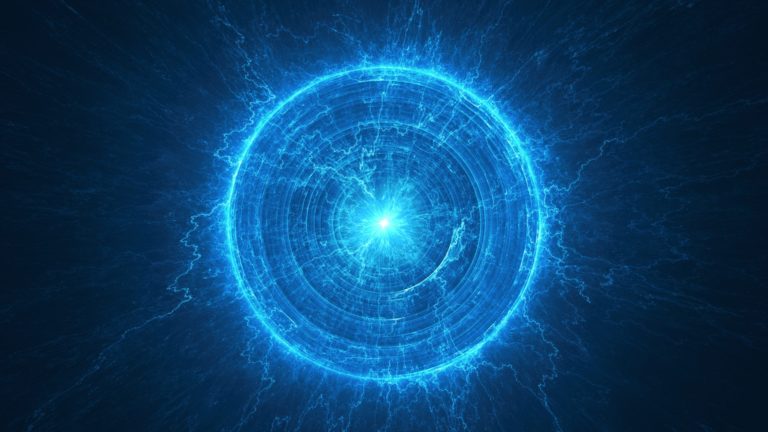
Free Energy
What if we could harness an energy source that provided free unlimited energy? An energy source that is pervasive throughout the universe and all around us, like a sea of energy. The answer to this might be Zero Point Energy (ZPE). ZPE is thought to be the quantum energy that exists in what we see as empty space from electromagnetic waves. To give an idea of this type of energy’s potential, one cup of ZPE would be enough to evaporate all the water in Earth’s oceans.
Originally, it was believed that at absolute zero, also known as the vacuum state, all subatomic movement stopped. However, scientists found that, in fact, there is movement and extensive amounts of energy, which is referred to as zero-point energy.
The theory of ZPE and whether it can be harnessed to produce energy has been an ongoing point of contention. But ZPE’s existence has been proven, and to hopeful scientists it has the potential to be a viable power source. Skeptics brush it off as being either non-existent or impossible to attain as an energy source. But Dr. Garret Moddel from the University of Colorado at Boulder, recently patented a prototype to harness ZPE.
Casimir Cavity
Moddel’s method relies on what is referred to as a Casimir cavity for harvesting ZPE. The ZPE field is close to an absolute minimum energy field where electromagnetic fluctuations force particles to pop in and out of existence.
The Casimir cavity, consisting of two plates held very closely together with an electromagnetic field separating them, creates an even lower field restraining the atomic particles from these electromagnetic fluctuations which subsequently release energy that can be harnessed. The atoms then travel out of the cavity and become reenergized by the universal quantum vacuum, which exists everywhere, allowing for an unlimited power source. And although this may sound fantastical, it is theoretically possible.




